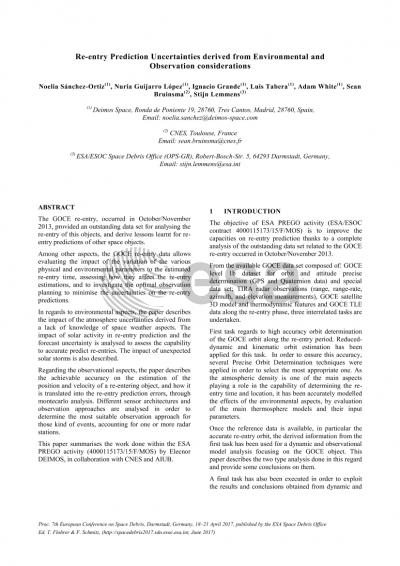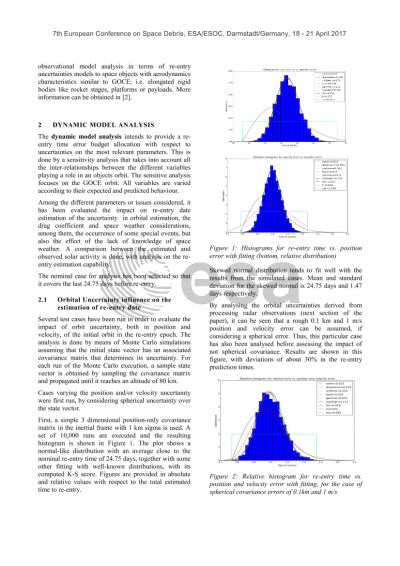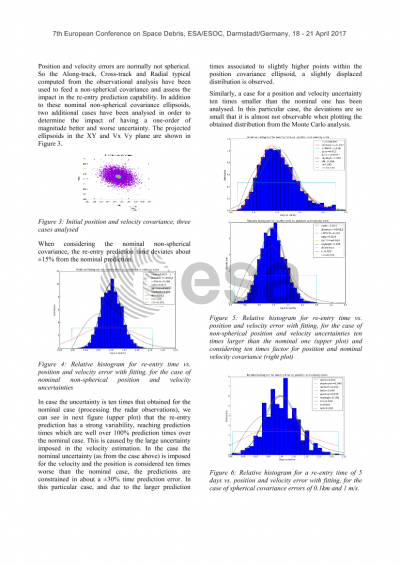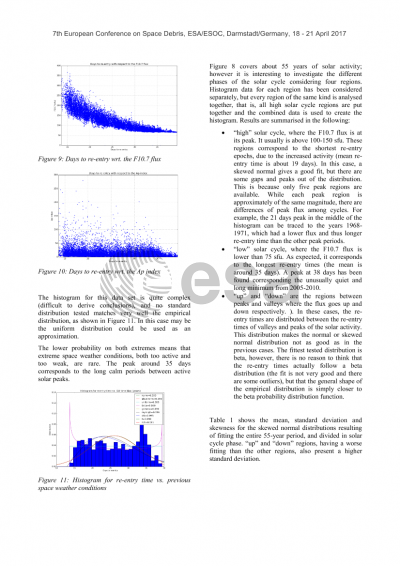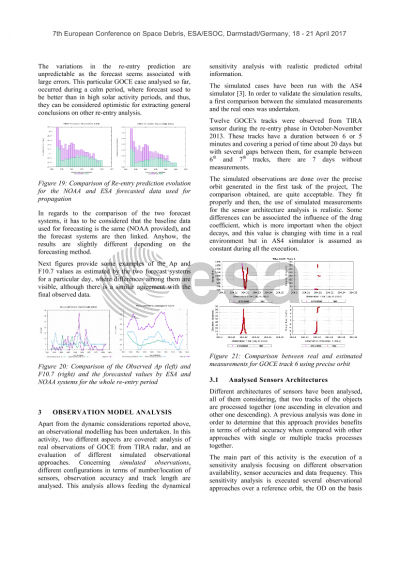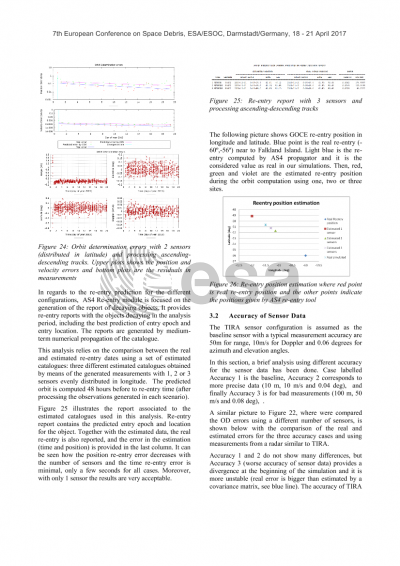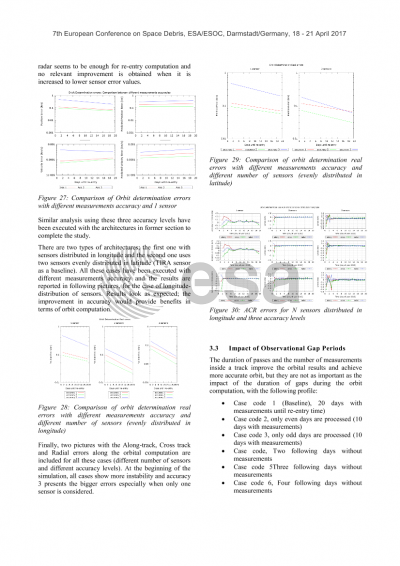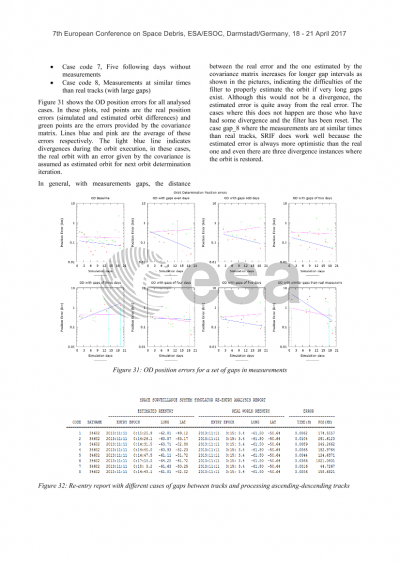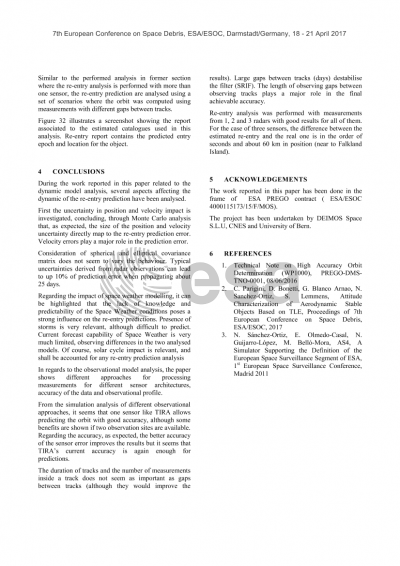Document details
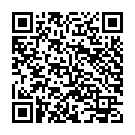
Abstract
The GOCE re-entry, occurred in October/November 2013, provided an outstanding data set for analysing the re-entry of this objects, and derive lessons learnt for re-entry predictions of other space objects.
Among other aspects, the GOCE re-entry data allows evaluating the impact of the variation of the various physical and environmental parameters to the estimated re-entry time, assessing how they affect the re-entry estimations, and to investigate the optimal observation planning to minimise the uncertainties on the re-entry predictions.
In regards to environmental aspects, the paper describes the impact of the atmosphere uncertainties derived from a lack of knowledge of space weather aspects. The impact of solar activity in re-entry prediction and the forecast uncertainty is analysed to assess the capability to accurate predict re-entries. The impact of unexpected solar storms is also described.
Regarding the observational aspects, the paper describes the achievable accuracy on the estimation of the position and velocity of a re-entering object, and how it is translated into the re-entry prediction errors, through montecarlo analysis. Different sensor architectures and observation approaches are analysed in order to determine the most suitable observation approach for those kind of events, accounting for one or more radar stations.
This paper summarises the work done within the ESA PREGO activity (4000115173/15/F/MOS) by Elecnor DEIMOS, in collaboration with CNES and AIUB.
Preview
